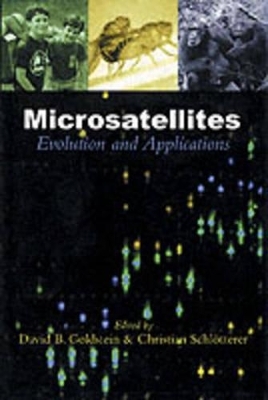
Microsatellites: Evolution and Applications
Oxford University Press (Verlag)
978-0-19-850407-8 (ISBN)
Microsatellites are short stretches of repeated DNA, found in most genomes, that show exceptional variability in humans and most other species. This variability has made microsatellites the genetic marker of choice for most applications, including genetic mapping and studies of the evolutionary connections between species and populations. This book brings together an international group of scientists currently working in microsatellites. Their contributions provide a detailed description of microsatellite biology, focusing on their mutation properties, generation, decay, and possible functional roles. They introduce the theoretical models that underpin the most popular methods for analysing the information that microsatellites can yield, including methods for estimating coalescent times, population divergences, and migration. Finally, the book describes the various ways in which the potential of microsatellites is being harnessed in a range of applications including medical genetics, forensics, genetic mapping, the analysis of human evolution, and conservation genetics.
David B Goldstein, Department of Zoology, University of Oxford, South Parks Road, Oxford OX1 3PS david.goldstein@zoo.ox.ac.uk Christian Schlötterer, Institut für Tierzucht und Genetik, Veterinärmedizinische Universität Wien, Vienna, Austria christian.schloetterer@vu-wien.ac.at
1. Microsatellites and other simple sequences ; 2. Functional roles of microsatellites and minisatellites ; 3. Microsatellites and mutation processes in tandemly repetitive DNA ; 4. Mechanistic basis for microsatellite instability ; 5. Microsatellite evolution : inferences from population data ; 6. A comparative approach to the study of microsatellite evolution ; 7. Trinucleotide expansion mutations cause diseases which do not conform to Mendelian expectations ; 8. Mutation and migration in models of microsatellite evolution ; 9. The coalescent and microsatellite variability ; 10. Estimating the age of mutations using variation of linked markers ; 11. Statistics of microsatellite loci : Estimation of mutation rate and pattern of population expansion ; 12. Using microsatellites to measure the fitness consequences of inbreeding and outbreeding ; 13. Microsatellites in conservation genetics ; 14. Microsatellites and the reconstruction of the history of human populations ; 15. Forensic applications of microsatellite markers ; 16. Tracking linkage disequilibrium in advanced population with microsatellite loci ; 17. Microsatellite markers in complex disease : mapping disease - associated regions within the human MHC ; 18. Microsatellites : a neutral marker to infer selective sweeps ; 19. Y chromosome microsatellite haplotypes and the history of Samoyed-speaking populations in N-W Siberia ; 20. MS analysis of human tumours
| Erscheint lt. Verlag | 10.6.1999 |
|---|---|
| Zusatzinfo | 3 halftones, line figures |
| Verlagsort | Oxford |
| Sprache | englisch |
| Maße | 157 x 235 mm |
| Gewicht | 553 g |
| Themenwelt | Informatik ► Weitere Themen ► Bioinformatik |
| Naturwissenschaften ► Biologie ► Evolution | |
| Naturwissenschaften ► Biologie ► Genetik / Molekularbiologie | |
| Naturwissenschaften ► Biologie ► Humanbiologie | |
| Naturwissenschaften ► Biologie ► Zoologie | |
| Sozialwissenschaften ► Soziologie | |
| ISBN-10 | 0-19-850407-1 / 0198504071 |
| ISBN-13 | 978-0-19-850407-8 / 9780198504078 |
| Zustand | Neuware |
| Haben Sie eine Frage zum Produkt? |
aus dem Bereich


